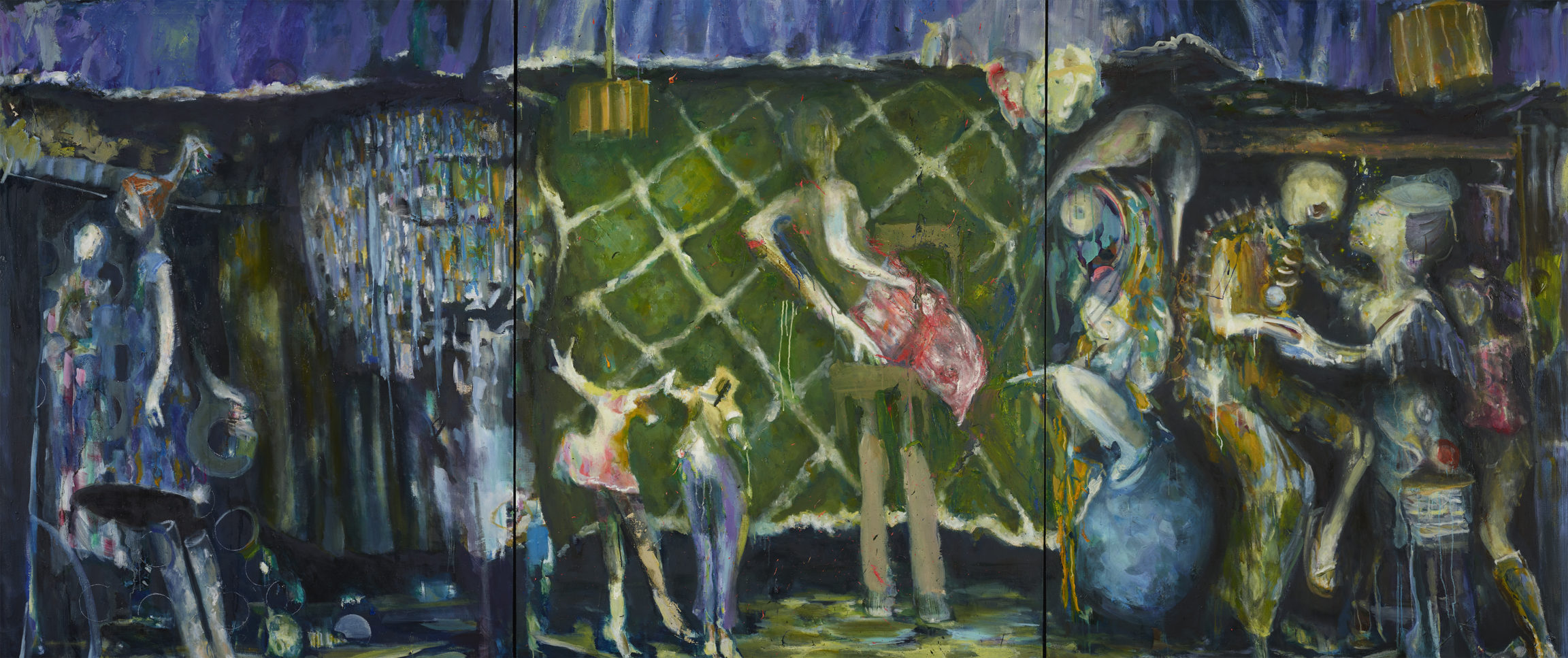Bibliography
Antonia Nessi (ed.), Valérie Favre, exh. cat. Neuchâtel, Musée d’art et d’histoire, Zurich, Scheidegger & Spiess, 2017: 139-140.
Valérie Favre. La première nuit du monde, exh. cat. Strasbourg, Musée d’art moderne et contemporain, 2015: 73-75.

![Luc Andrié , 2008 (14) (from the series L’homme blanc n’a plus de peau [The white man no longer has a skin]), 2008](https://www.mcba.ch/wp-content/uploads/2021/02/2010-011_ANDRIE_num4000_cb-768x1257.jpg)


Before devoting herself to the visual arts in the 1980s, Valérie Favre worked as a theatre actress in Geneva and Paris. After a brief stab at performance art, she turned to painting as a medium that was sufficiently physical to please her. She engages fully with its materiality and paints for hours on end, sometimes without stopping to eat, spending months on each work. Her total involvement is accompanied, paradoxically enough, by a kind of pragmatism in her attitude to the ‘impossible’ undertaking of making things visible.
Crystal Palace belongs to her Les Théâtres series, begun in 2007. Over three panels forming a kind of panorama, the artist lays out a frieze of figures (dancers, acrobats, animals, skeletons – some of these dressed in harlequin suits) that recalls the dance of death motif. The curtains and lamps tell us that they are on a stage. Because of the tight framing, viewers cannot say whether they are standing on the rostrum or among the audience. Favre heightens this sense of uncertainty by having her Théâtres hung relatively low, the better to embrace the world around them. She thus opens up a frontal narrative about the darkness and beauty of humanity, about the tragedy and comedy of all life, about what she calls ‘the madness of the world’.
Favre paints without preliminary sketches. She lays out her setting and then puts in the individual figures, which she is constantly correcting – a first state of Crystal Palace was exhibited in Strasbourg in 2015, after which she reworked the positions and postures of certain figures, as well as their clothing. On the left, for example, she has substituted a chandelier for a figure in an aquarium. And she has removed tables that served as stages. The great narrative power and aura of this triptych result from its teeming composition, its imaginative richness and its expressive treatment of the paint (colours, drips, impasto, accidents).